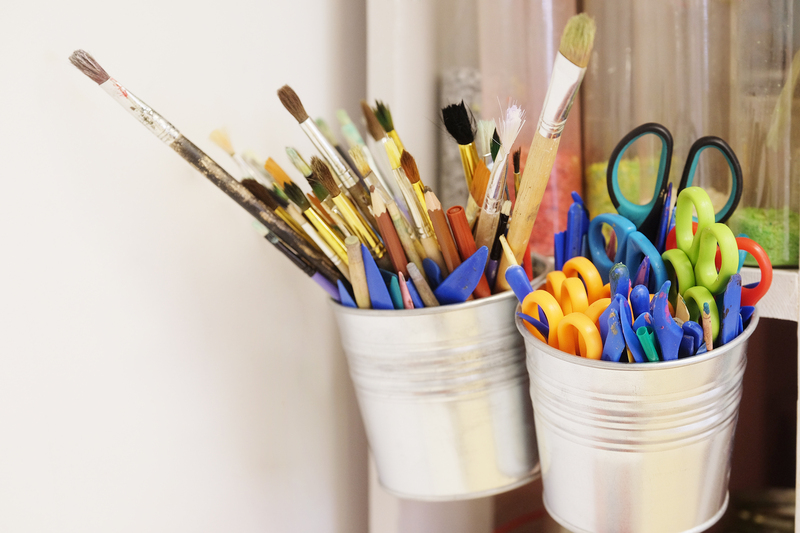Sustainable Style: Turn Outdated Items into Fashionable Upcycled Trends
Fashion and sustainability are no longer at odds. The rise of upcycling has created a new mainstream: sustainable style. By turning outdated items into fashionable upcycled trends, we not only express our creativity but also protect the planet. In this comprehensive guide, learn how to give second life to your wardrobe, find inspiration for upcycled creations, and become part of a global movement towards eco-friendly fashion.
Understanding Sustainable Style and Upcycling
In recent years, sustainable fashion has emerged as one of the industry's most powerful trends. This approach prioritizes minimizing environmental impacts through reduced waste, ethical production, and thoughtful consumption. One of the cornerstones of this movement is upcycling--the creative process of transforming old or unwanted items into valuable, stylish new pieces.
What Is Upcycling in Fashion?
Unlike recycling, which often breaks down materials to create something new, upcycling involves repurposing items in ways that maintain or elevate their value. For the fashion-conscious, upcycled clothing is a way to:
- Reduce textile waste
- Promote individuality
- Save money
- Support sustainable living
Upcycled trends are popping up everywhere--from the runways of Paris to local thrift stores--showing that sustainability and style can coexist beautifully.

Benefits of Upcycling Outdated Fashion Items
1. Reducing Your Fashion Footprint
The fashion industry is notorious for generating waste, with millions of tons of textiles ending up in landfills annually. By upcycling, you extend the life of existing materials, directly combating this problem.
2. Saving Money with Sustainable Style
Turning outdated items into fashionable upcycled trends is not only eco-friendly but also budget-friendly. Instead of purchasing new apparel, you can reinvent what you already own or have found secondhand.
3. Expressing Creativity and Individuality
Each upcycled piece tells a story and reflects your unique aesthetic. Through DIY projects and creative reimagining, you can build a wardrobe that is completely one-of-a-kind.
4. Supporting Ethical and Local Fashion
Many small businesses and artisans focus on sustainable style through upcycling. By supporting them, you contribute directly to ethical labor practices and community growth.
Step-by-Step: How to Upcycle Clothing for Sustainable Style
If you're ready to start your journey into sustainable style, follow this step-by-step approach to turn outdated fashion into the latest upcycled trends.
1. Assess Your Wardrobe
- Take an honest look at what you own.
- Identify items that are worn, out of trend, or simply unloved.
- Think creatively; even items beyond repair can offer fabric, buttons, or embellishments for new projects.
2. Find Your Upcycle Inspiration
Consult platforms such as Pinterest, Instagram, and YouTube for upcycling tutorials and sustainable fashion ideas. Some popular projects include:
- Distressing jeans for a modern, edgy look
- Transforming t-shirts into tote bags or crop tops
- Adding embroidery to jackets or denim
- Patching up holes with funky fabrics
- Reworking dresses into chic skirts or tops
3. Gather Your Supplies
- Basic sewing kit (thread, needles, scissors, pins)
- Fabric glue for no-sew projects
- Paints, patches, and embellishments
- A reliable sewing machine (optional for more advanced work)
4. Start Small and Experiment
Don't be intimidated! Begin with simple upcycling projects before attempting complex alterations. Some easy starting points:
- Add iron-on patches to denim jackets for personal flair.
- Cuff, hem, or bleach outdated jeans for a refreshed look.
- Cut old t-shirts into crop tops, tank tops, or headbands.
5. Grow Your Sustainable Style Skills
As you get comfortable, experiment with:
- Sewing new garments from multiple old pieces
- Creating zero-waste clothing patterns
- Dyeing fabrics naturally with vegetables or plant-based dyes
Upcycling Ideas for Every Skill Level
For Beginners: No-Sew Projects
- Turn an old scarf into a chic halter top with a few knots.
- Use fabric paint to stencil designs onto plain shirts.
- Transform worn-out sweaters into cozy beanies or mittens.
Intermediate: Mix and Match
- Combine the best parts of two outdated shirts to create a unique hybrid piece.
- Add lace, ruffles, or patches to a plain skirt for added interest.
- Use embroidery to personalize denim or canvas items.
Advanced: Complete Garment Reconstruction
- Deconstruct an outdated dress to create a matching top and skirt set.
- Quilt fabric scraps from several shirts into a statement jacket.
- Turn a large men's shirt into a fitted dress with a few tailoring tricks.
Must-Have Tools for Upcycling Fashion
Having the right tools will make your upcycling journey into sustainable fashion trends smoother and more enjoyable. Here's what you'll need:
- Sewing machine (for advanced projects)
- Hand-sewing needles and thread in various colors
- Seam ripper for deconstruction
- Fabric scissors for clean cuts
- Pins and measuring tape to ensure accuracy
- Fabric glue and iron-on patches for quick fixes
- Tailor's chalk or marking pen
Sustainable Style Success Stories
Some of today's most fashion-forward icons have helped popularize upcycling. From celebrities who frequent vintage shops to designers who showcase upcycled collections at fashion week, the influence is undeniable. Here are a few examples:
- Stella McCartney: Renowned for her ethical and upcycled fashion lines.
- Emma Watson: Wears upcycled designer gowns on red carpets, inspiring younger generations.
- Re/Done, Beyond Retro, and Patched Vintage: Labels dedicated to transforming outdated items into stylish, desirable garments.
Local Upcycling: Get Involved!
- Attend clothing swap events.
- Support local artisans and sustainable brands focusing on upcycling.
- Host DIY upcycle parties with friends and family.
This not only encourages sustainable style in your community but fosters creativity and connection through shared experiences.
Evolving Trends in Upcycled Fashion
The world of fashionable upcycled trends is always evolving. Today's popular styles include:
- Patchwork denim and quilted jackets--throwbacks with a modern twist.
- Embroidered and beaded details--personal touches on simple pieces.
- Shirt dresses and oversized silhouettes--crafted from oversized men's shirts.
- Reimagined accessories--handbags from old belts, earrings from found objects.
By staying attuned to current sustainable fashion trends, you can keep your upcycled wardrobe looking fresh and modern.
Environmental Impact: Why Upcycled Fashion Matters
Each year, the fashion industry produces vast amounts of pollution and waste--according to the Ellen MacArthur Foundation, the equivalent of one garbage truck of textiles is landfilled or burned every second. By choosing upcycling as a cornerstone of your sustainable style, you:
- Reduce landfill waste
- Lower greenhouse gas emissions
- Minimize resources used for manufacturing new textiles
Imagine if even a fraction of consumers embraced sustainable style by turning outdated items into upcycled treasures--the positive environmental impact would be enormous.
Tips for Mastering Sustainable Style with Upcycled Trends
- Start Small: Don't feel overwhelmed--begin with one project at a time.
- Mix Old with New: Incorporate upcycled pieces with your favorite store-bought basics for a balanced wardrobe.
- Stay Creative: Think outside the box--fashion is about self-expression!
- Share Your Results: Inspire others by posting your upcycled outfits on social media with hashtags such as #upcycledfashion and #sustainablestyle.
- Keep Learning: Follow eco-fashion influencers and attend local workshops to pick up new techniques.

Frequently Asked Questions about Upcycling and Sustainable Style
Is upcycled fashion expensive?
Typically, upcycled fashion is much more affordable than new designer pieces, especially when you're using your own outdated items. For unique vintage finds or artisan-made upcycled garments, prices may be higher--reflecting the creativity and labor involved--but so is the value!
Can I upcycle clothes without sewing skills?
Absolutely! Many upcycling projects require no sewing at all--think iron-on patches, painting, knotting, or even clever cutting. As your interest grows, developing basic sewing skills can open up even more possibilities.
How can I tell if a brand practices sustainable style?
Look for transparency in their sourcing, production methods, and values. Brands dedicated to sustainable style often emphasize upcycled fashion, circular production, and ethical labor practices.
What are the most popular upcycled trends right now?
Some of the hottest upcycled trends include patchwork denim, reworked graphic tees, repurposed vintage accessories, and hand-embroidered outerwear. Sustainable style is all about uniqueness, so don't be afraid to set your own trends!
Conclusion: Make Sustainable Style Your Signature
Embracing sustainable style means more than simply following trends--it's about making conscious choices, expressing your individuality, and caring for the planet. By learning to turn outdated items into fashionable upcycled trends, you play an active role in transforming the fashion industry for the better.
So clear out your closet, dust off your creativity, and dive into the rewarding world of upcycled fashion. Not only will you develop a wardrobe that is uniquely yours, but you'll inspire others and contribute to a more sustainable future. Stylish, eco-friendly, and endlessly creative--what more could you ask for?
Ready to begin your journey? Share your sustainable style creations and join a growing community of eco-conscious fashion lovers worldwide!